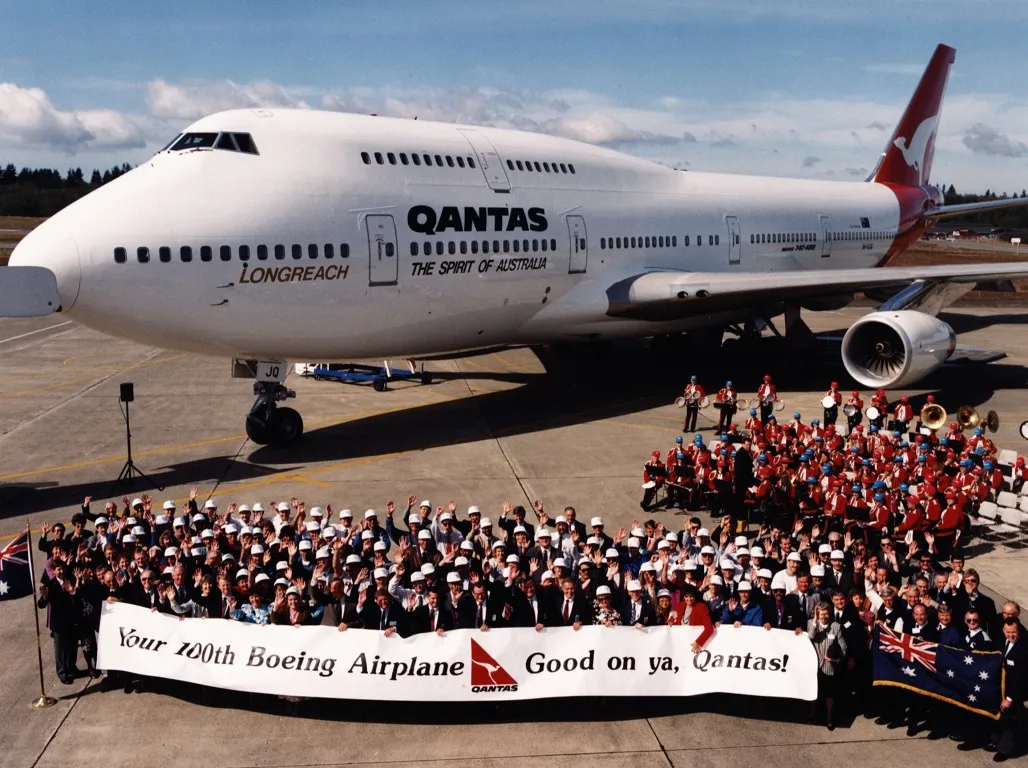
Qantas & Boeing - an enduring partnership
Oct 15, 2017

Qantas and Boeing share a long-standing partnership that dates back to the early days of aviation. This collaboration has been characterized by mutual trust and innovation, as both companies have worked together to enhance the passenger experience and improve operational efficiency. Qantas has relied on Boeing’s advanced aircraft technology to modernize its fleet, ensuring safety and comfort for travelers. Over the years, this alliance has enabled Qantas to maintain its status as a leading airline in the Asia-Pacific region, while Boeing benefits from Qantas' commitment to sustainability and long-range travel capabilities. Together, they continue to shape the future of air travel.
Qantas and Boeing have built a formidable partnership over the decades, characterized by innovation, reliability, and a commitment to excellence in aviation. This alliance has not only transformed the Australian airline industry but has also had a significant impact on global aviation standards. In this article, we’ll explore the evolution of their partnership, the aircraft that have defined their journey, and what the future holds.
The Early Years: A Partnership Begins
The history of Qantas and Boeing dates back to the 1930s when Qantas was looking to expand its fleet. The introduction of the Boeing 307 Stratoliner in 1940 marked the beginning of a long-standing relationship. This aircraft was revolutionary, featuring the first pressurized cabin, allowing for higher altitudes and smoother flights. The collaboration during these early years set the stage for future innovations.
Iconic Aircraft: Boeing 707 to 787 Dreamliner
Over the years, Qantas has operated several iconic Boeing aircraft, each contributing to the airline's reputation for safety and service quality. Below is a brief overview of some key models:
| Aircraft Model | First Flight Year | Significance |
|---|---|---|
| Boeing 707 | 1957 | First jet aircraft in Qantas fleet; revolutionized long-haul travel. |
| Boeing 767 | 1981 | Enhanced operational efficiency and comfort for medium-haul routes. |
| Boeing 747 | 1970 | Known as the "Jumbo Jet," it expanded global reach and capacity. |
| Boeing 787 Dreamliner | 2009 | Introduced advanced technology for fuel efficiency and passenger comfort. |
Innovations and Sustainability
Both Qantas and Boeing have made significant strides in promoting sustainability in aviation. The commitment to reducing carbon emissions and enhancing operational efficiency is paramount. The introduction of the Boeing 787 Dreamliner is a prime example, as it offers up to 20% better fuel efficiency compared to older aircraft. Qantas has also committed to achieving net-zero emissions by 2050, aligning its goals with Boeing's innovation in sustainable aviation technologies.
Recent Developments: The Future of the Partnership
The partnership between Qantas and Boeing continues to evolve. In recent years, Qantas has placed substantial orders for Boeing aircraft, including the 787-9 Dreamliner and the upcoming 777-9. These new aircraft will not only modernize the fleet but also enhance passenger experience with more spacious cabins and advanced entertainment systems. The investment reflects Qantas's confidence in Boeing's capabilities and its commitment to providing top-notch service to its customers.
Challenges and Resilience
The aviation industry faced unprecedented challenges due to the COVID-19 pandemic. Qantas, alongside Boeing, adapted to these changes by implementing stringent health measures and reducing operational capacity. The resilience shown by both companies during these trying times has strengthened their partnership. As air travel gradually rebounds, Qantas is poised to leverage its Boeing fleet to meet the increasing demand for travel.
Conclusion: A Bright Future Ahead
The enduring partnership between Qantas and Boeing is a testament to their shared values of innovation, safety, and customer service. As they continue to navigate the challenges of the aviation industry, their collaboration will undoubtedly lead to exciting advancements in technology and service. With a commitment to sustainability and a focus on enhancing passenger experiences, the future looks promising for both Qantas and Boeing.
In summary, the journey of Qantas and Boeing is one of mutual growth and shared successes. Their partnership has not only shaped the landscape of the Australian airline industry but has also set a benchmark for global aviation. As we look ahead, we can expect this alliance to continue to thrive, bringing innovative solutions and exceptional service to travelers around the world.
Related Articles

Explore Thailand: The Best Islands to Visit for Paradise, Adventure, and Relaxation

The Ultimate Guide to the Best Islands in Thailand for Your Next Getaway

Do babies need passports? How to get a passport for a newborn

How to get a U.S. passport fast: here’s how to expedite the process

What is Mobile Passport Control: 5 reasons why you should use it

SENTRI vs. Global Entry: A detailed guide

Do you need a passport to go to the Bahamas? Let’s find out

Do you need a passport to go to Mexico? A detailed guide

Do you need a passport to go to Canada? We got the answer

Do You Need a Passport for a Cruise: An Essential Travel Guide

Booster Seat Requirements: All the Rules to Follow in Your Rental Car

What Are the World’s Most Powerful Passports, and How Does Yours Rank?

How to Take a Passport Photo at Home: A Helpful Guide

You've got to have heart! Southwest's new livery

Your opinion: Should water be free on low cost carriers?

Young women bolder than guys as solo travellers
